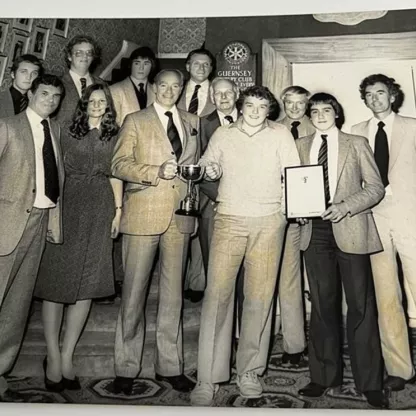Multi-asset fund manager David Coombs channels some empathy for Gareth Southgate, as he looks to put together a portfolio that can achieve optimal performance over the long haul, but may look out of touch during periods when market momentum is against you.

Record rotations in stocks and English Euros hopes
Despite being Welsh I have always passionately supported the other home nations in the Euros and World Cups. Right from Scotland’s group stage bow-out in the 1974 World Cup, it has never been an easy watch. Given their small populations, you might expect Scotland and Northern Ireland would need to maximise their potential in order to progress, with hopefully a little bit of good fortune along the way. England, however, given its more plentiful resources, should expect more serene progress...
The first England international I can remember watching on TV was versus Poland in 1973 in black and white. England needed to win to qualify for the 1974 World Cup. Poland was meant to be weak and England had just defeated Austria 7-0, but inspired by a brilliant goalkeeping performance from Jan Tomaszewski, who Brian Clough had nicknamed the clown pre-match, they claimed a draw. England had 36 shots, 26 corners, hit the post twice and had four efforts cleared off the goal-line. It took a dubious penalty for them to equalise and ended up drawing 1:1. Their World Cup aspirations were over. The frustration was off the scale. Sound familiar?
During this Euro tournament up until the semi-final it felt like the age-old scenario. And then in the first half of the semi a completely different England turned up, even though it was the same personnel. Portfolio management often feels the same. You construct what you think is the best mix of assets to achieve optimal performance, but for periods you can look pedestrian and out of touch when the market momentum is against you. I haven’t had beer thrown at me (yet), but there have been some tough emails. Then you get an inflection point and suddenly your portfolio looks dynamic and ‘of the moment’ even if you haven’t changed a thing.
This is England: performance can change on a dime, despite no squad changes
I feel some empathy with England manager Gareth Southgate. Your investors are worried about you one minute and then noting how pleased that you have turned it around, when in fact you haven’t done much, other than doubled down on your convictions.
We have just experienced this journey over the past three months or so. April and May were really difficult for us. Our equity portfolios are managed, broadly speaking, on an equal-weighted basis, rather than on market capitalisation. This means our holding in computer chip designer Nvidia, for example, is capped at a much lower level than the indices and probably versus most of our active peers as well. We do this to reduce single-stock risk in our portfolios to try to limit short-term falls in value. Most of the time this works for us, but when you get a huge momentum-driven market in a narrow basket of stocks this can cause you to lag the market and your peers by a sizeable margin. So, while we hold Nvidia, chip maker Taiwan Semiconductor Manufacturing Corporation, chip-making machine builder ASML, digital office tools supplier Microsoft, search giant Alphabet and ecommerce business Amazon, we do so in limited size.
The other issue affecting us was the weakness in consumer-cyclical companies and interest-rate sensitive companies, such as utilities, real estate, infrastructure, etc. This was due to a number of profit warnings or lower guidance during first-quarter earnings announcements, reported in the second quarter.
Those of you who listen to our The Sharpe End podcast, will know that we were frustrated that these announcements of weaker demand from our companies seemed to be at odds with the macroeconomic narrative that inflation and employment were sticky and there were no signs of weakness in the economy. You will know, we prefer to rely more on real world data than surveys. As such, we decided to stick with our strategy, confident that eventually the ‘real world’ information that we were seeing and hearing would eventually be reflected in official data.
Finally last Thursday CPI inflation in the US dropped to 3% versus consensus forecasts of 3.1%. This doesn’t sound like a huge beat, but it caused a huge rotation in the US stock market as investors believed it should encourage the US Federal Reserve to reduce interest rates at its September meeting. You would have missed the seismic stock moves if you looked only at headline index movements. The S&P 500 Index fell 0.9%, but more than 75% of the constituents moved up. The fall reflected profit-taking in ‘mega-cap tech’ (including many of the names we mentioned above) which are by far the biggest positions in the index. This increase in market breadth benefits our equity portfolio which, as we mentioned, tends to have a more diversified equal-weighted structure.
Small-cap comes to the fore with rate cuts in the wind
In addition, US smaller companies – as measured by the Russell 2000 Index to which we are overweight – outperformed large-cap companies (S&P 500) by 5.6% in one day as they tend to benefit more from lower interest rates. This was one of the biggest relative one-day outperformances in history (you have to go back to 1979 to find another move larger than 3%). At the start of the day the valuation gap between small and large companies was near historic highs, hence our positioning.
There was also a large rotation from high-growth companies (mega-tech) to industrials, consumer names and utilities. American Tower, a holding of ours that has lagged for some time, was up 5.3% while, say, Nvidia was down 5.6%, a bigger swing than the Tories to Labour last week.
The potential for lower interest rates is also good for bonds and negative for the dollar. As most of our investors will know we have built up a significant bond portfolio over more than 18 months and yesterday was a good day as yields fell (so prices, therefore, rose). We’re currently hedging half of our dollar exposure, i.e. locking in an exchange rate for our US assets ahead of time. That meant we were less hurt by the Thursday’s rise in the pound against the dollar.
In my view, all this demonstrates the need for patience and to hold firm with your convictions. Markets don’t always reflect the fundamental value of an asset. Often, market hype, momentum, and the popular view of the moment can drive trends for longer than you think. And that’s not to mention distortions driven by hedge funds and algorithmic traders that benefit from and exacerbate market trends. It’s very difficult when you are on the wrong side of these forces. Yet you must occasionally find yourself there because, bluntly, it’s only when you take the unpopular side of the trade that you can properly add value. Buying when others are selling – and vice versa – is when you can get the best price. The danger is that you capitulate and start chasing the market – also known as FOMO – right at the worst possible moment. In my experience this always ends badly.
Look, one day is not enough to claim victory and it’s too early to start celebrating, but I think it does demonstrate the need for calm. We believe we are past peak rates in the US, that they will gradually decline over the next 18 months and recession will be avoided. That’s what we have been positioned for all year. The market disagreed in the second quarter, but in one day it moved massively towards us.
I feel really confident that this will continue over the next six months, although there will be more volatility and yes some frustrations along the way. It’s never easy or relaxing, this game, unless you are Spanish of course.
Tune in to The Sharpe End - a multi-asset investing podcast from Rathbones. You can listen here or whenever you get your podcasts. New episodes monthly.








